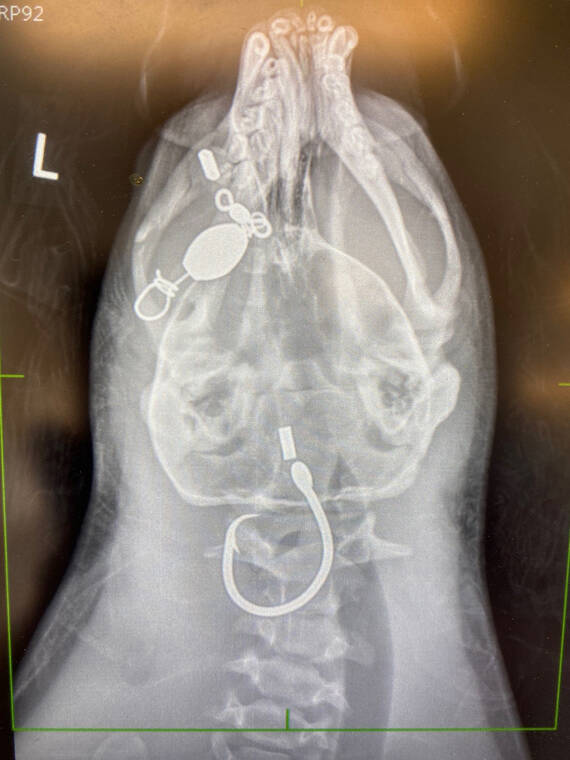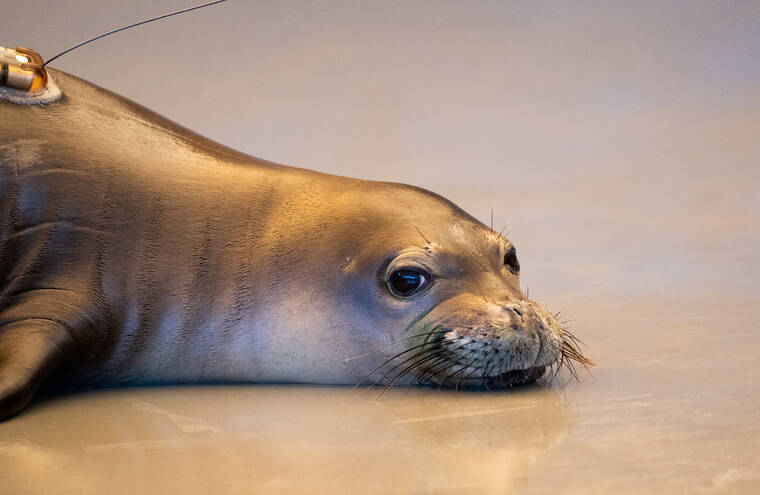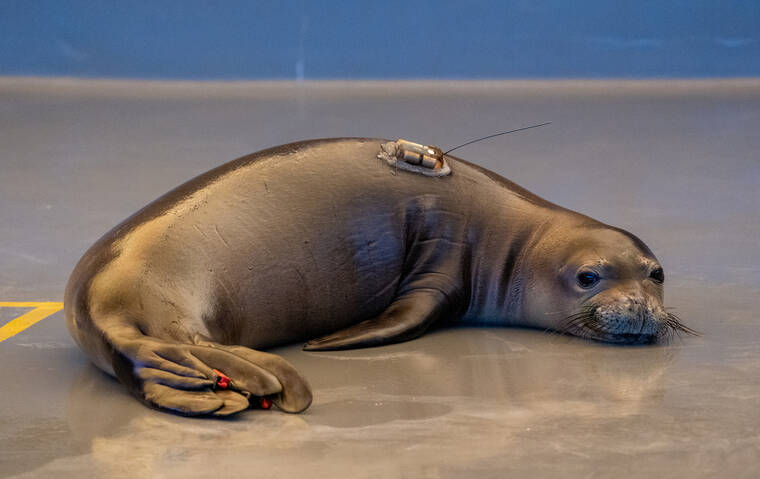Hook free and headed home: Hawaiian monk seal RP92 returned to Molokai
A Hawaiian monk seal is back in the wild after undergoing surgery to remove an ingested hook at Ke Kai Ola, The Marine Mammal Center’s monk seal hospital in Kailua-Kona.
The seal, a male identified as RP92, was returned to his home waters of Molokai on Friday after the center’s veterinary experts approved the endangered seal for release. During his five weeks at the hospitlal, RP92 gained over 25 pounds.
“Our team is thrilled to release RP92 back to the wild after he made a full recovery from a complex procedure to remove a swallowed fishing hook, an incredible success story,” said Dr. Sophie Whoriskey, the Center’s Hawaiian Monk Seal Conservation Veterinarian. “This seal’s story reemphasizes the importance of our ongoing partnerships to help save this species when the survival of each individual is critical to the recovery of the population.”
The center’s team utilized special dehooking tools while RP92 was under anesthesia to safely remove the ingested hook near the animal’s larynx, avoiding a more complex surgery and recovery.
Analysis from a series of blood and fecal samples taken during the initial care process showed no signs of illness, including toxoplasmosis, according to the center.
The center said the successful rescue, treatment and release of RP92 was made possible thanks to its partnership with the National Oceanic and Atmospheric Administration, U.S. Coast Guard and the National Park Service. Before release, the animal was fitted with a temporary satellite tag that will allow scientists to monitor his movements in the wild.
“The life of each monk seal is critically important, especially since there are just over 1,500 left in the world,” said Diana Kramer, NOAA Fisheries Protected Resources Division, Pacific Islands Region. “We’re thankful to have such great partners to care for seals like RP92. We’re also excited to learn more about RP92’s life and movements through the satellite tag. There is so much these animals can teach us.
“We hope to use the information gained from RP92’s tag to track his success, and also for broader population recovery efforts,” Kramer added.
Since 2014, some 38 monk seals have been rehabilitated and released. Most of the seals have been rescued from and returned to the Northwestern Hawaiian Islands as part of the center’s partnership with NOAA Fisheries, utilizing resources in the area to identify seals in need, rescue and rehabilitate them, and give them a second chance at life.
According to NOAA, the population of endangered Hawaiian monk seals has steadily increased over the past two years.
Officials estimated the population grew by more than 100 from 2019 to 2021, bringing the total from 1,435 to 1,570 seals. Monk seals live only in Hawaii, including the uninhabited Northwestern Hawaiian Islands where most of the animals are found.
NOAA has monitored the seal population for almost 40 years. The agency said this year was the first time the population has surpassed 1,500 in more than 20 years.
The animals are listed as endangered under the Endangered Species Act and depleted under the Marine Mammal Protection Act.
The public should keep a safe distance of at least 50 feet from monk seals and at least 150 feet from monk seal mothers with pups. Report sightings to the center’s response team via 24-hour hotline on Hawaii Island at (808) 987-0765.
Report hooked, stranded or entangled monk seals to the statewide NOAA Fisheries Marine Wildlife Hotline at (888) 256-9840.






